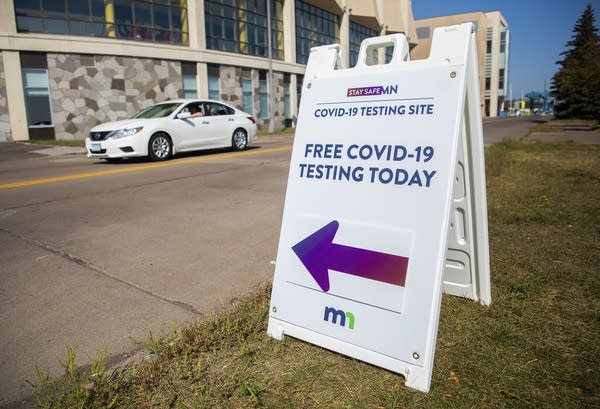Oct. 5 update on COVID-19 in MN: Nearly 1K new cases on strong testing

Signs behind the Duluth Entertainment and Convention Center alert people to the presence of free COVID-19 testing Sept. 22 in Duluth, Minn.
Derek Montgomery for MPR News file
Go Deeper.
Create an account or log in to save stories.
Like this?
Thanks for liking this story! We have added it to a list of your favorite stories.


